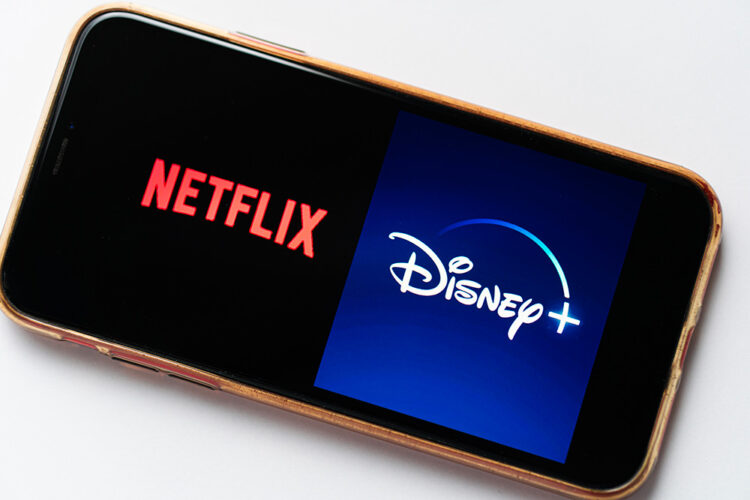Early ad-tier growth suggests we’ve not yet reached ‘peak SVOD’

Analysis
After a sluggish start, streaming giants Netflix and Disney+ appear to have found limited success with cheaper, ad-funded tiers and subscription hikes.
In December, Netflix’s global head of advertising Jeremi Gorman told attendees at this publication’s Future of TV Advertising Global conference: “The way that we launched the business is not representative of what we want the future of the business to be.”
Fast forward to late March, and it seems the launch of Netflix’s cheaper ad-supported tier hasn’t gone as badly as many might have predicted. This is despite Netlix and streaming TV rival Disney+ both changing strategy last year to focus on profitability rather than rapidly growing their subscriber bases. Kantar’s Entertainment on Demand data on the UK streaming market last year found the SVoD market decline accelerated by 488,000 households, with 1.66m SVoD services cancelled during the second quarter of 2022
The subscriber slowdown led to increasing pressure from investors to stem losses, with selling ads against existing and new content a key part of their path to profitability. Netflix, in particular, launched “Basic With Ads” to increase its customer base, rather than expect existing customers drop their monthly subscription down to the cheaper Basic with Ads package.
‘Disney launched ads like an entertainment company… Netflix like a tech company’
So far so good, it seems. The share of new Netflix customers signing up to its “Basic With Ads” product is growing, according to data from insights company Antenna. “Basic with Ads” accounted for 9% of new sign-ups in November, 15% in December and 19% in January, Antenna said. The company’s ad-supported product costs £4.99 a month, compared with £10.99 for the ad-free Standard option.
Disney+, which has so far only launched an ad-funded tier in the US, has fared even better. Ad-supported versions of Disney+ (including sister Disney streaming services Hulu and ESPN+) accounted for 20% of new sign-ups in December, 27% in January and 36% in February, Antenna found. Disney charges $7.99 a month for the version of Disney+ with ads, compared to $10.99 with no ads.
Disney launched its ad-supported tier in early December as part of its drive to achieve profitability in its direct-to-consumer business, which has lost nearly $10bn since launching Disney+ in late 2019.
Notably, 94% of subscribers to the ad-free Disney+ service stayed with the product at a higher price point despite a $3 per month price increase in in the US, Antenna added.
Much of the early success of Disney+ relative to Netflix has been purely because of the former’s marketing strategy, according to CEO and co-founder of Antenna Jonathan Carson.
“Disney+ launched the ad-supported product like an entertainment company. Netflix launched it like a tech company,” Carson said. “With Netflix, it was a limited release, only on one of the plans, and you kind of had to search to find it. Tech companies classically release small, do a lot of testing, iterate, and then hit the gas if successful.”
Unlocking growth with more creative inventory
However, both companies ad-funded tiers are nowhere near some of the hopes for new ad inventory or targeting solutions that media buyers called for when they were first announced last year.
Eric Levin, chief content & innovation officer for Publicis Media US, told The Media Leader that Netflix should be using the opportunity to allow for more creative forms of advertising: “We’ve barely scratched the surface on the tech that allows us to actively participate in advertising – voice touch, QR codes, VR/AR, etc. – all of it can and should be looked at as a way ‘in’.”
Speaking to this concern at FVTA in December, Gorman admitted that the “Basic With Ads” launch had been “so quick” and that only allowed the company to create “the most standard ad units”. She stressed that the company is keen to get into the “standard measurement business”. Netflix and Disney are now members of Barb, the UK measurement company that has independently measured TV audiences for 40 years.
The dream, Gorman went on, was for Netflix to become a top global advertising destination like Times Square or the football World Cup.
She wants the streaming giant to feature “advertising [that] is as much of a draw as anything else… where people want to come to what we’re doing because the advertising is so good, so topical, so relevant, so compelling”.
In other words, there is only so much that Netflix and Disney+ can do to grow its subscriber base incrementally with a cheaper, ad-funded option. At some point it will have to grow ad revenue substantially with better creative options and better ways of using the data it has on its audience.
But we’re not there yet, these early number suggests. We appear to be a few episodes shy still of reaching peak SVOD.



